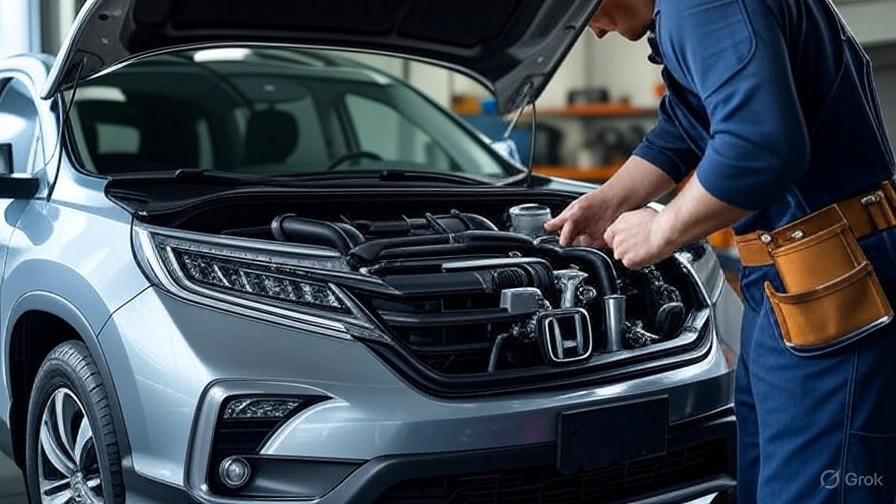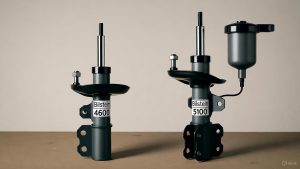Your Honda Pilot dashboard starts flashing that dreaded oil life message again. The wrench icon appears, and you know it’s time to deal with the oil life monitor system. Many Pilot owners feel confused when they see these maintenance reminders pop up on their instrument cluster.
The good news is that resetting your Honda Pilot’s oil life indicator takes just a few minutes once you know the right steps. This comprehensive guide walks you through the entire process for different model years, explains why the oil monitoring system matters, and helps you avoid common mistakes that could leave you scratching your head.
What is the Honda Pilot Oil Life Monitor System?
Honda developed the oil life monitoring system to track your engine oil’s condition based on driving patterns, engine temperature, and operating conditions. This intelligent system calculates when your oil needs changing rather than relying on simple mileage intervals.
The oil life percentage appears on your dashboard display, starting at 100% after each reset and gradually decreasing as you drive. When the percentage drops to 15%, your Pilot displays the “SERVICE DUE SOON” message. At 5%, the message changes to “SERVICE DUE NOW” with an accompanying maintenance minder code.
Your Honda Pilot uses various sensors to monitor engine conditions. The system tracks engine revolutions, operating temperature, and vehicle speed to determine oil degradation rates. This smart technology ensures you change your oil when it actually needs changing, not just when the calendar says so.
Why You Need to Reset the Oil Life After Service
After changing your engine oil and filter, you must reset the oil life monitor to ensure accurate tracking. The system doesn’t automatically detect fresh oil, so manual reset becomes essential for proper maintenance scheduling.
Skipping the reset process leaves your maintenance reminders out of sync with actual service intervals. Your dashboard will continue showing outdated information, potentially leading to premature or delayed oil changes. This confusion can affect your engine’s longevity and performance.
The oil life monitor also communicates with Honda’s maintenance minder system. Proper reset ensures your vehicle displays the correct service codes and schedules other maintenance items like air filter replacement, tire rotation, and transmission fluid changes at appropriate intervals.
Honda Pilot Oil Life Reset Methods by Model Year
Different Honda Pilot model years use varying procedures for oil life reset. The method depends on your vehicle’s generation and dashboard configuration. Here are the specific steps for each major generation.
2003-2008 Honda Pilot Oil Life Reset
First generation Honda Pilots use a straightforward button combination method. These older models have simpler dashboard displays but still require proper reset procedures.
Start by turning your ignition to the “ON” position without starting the engine. You’ll see all dashboard lights illuminate briefly as the system performs its self-check. Make sure your parking brake is engaged for safety.
Locate the “SELECT” and “RESET” buttons on your instrument panel. These buttons are typically found near the speedometer or on the steering wheel controls. Press and hold both buttons simultaneously for about 10 seconds.
Watch your oil life display during this process. The percentage should start flashing and then reset to 100%. If the display doesn’t change, release the buttons and try again, ensuring you’re holding them firmly.
Turn off the ignition and restart your engine to verify the reset worked properly. The oil life should now read 100%, and any maintenance messages should disappear from the display.
2009-2015 Honda Pilot Oil Life Reset
Second generation Pilots introduced more advanced dashboard displays with different reset procedures. These models often feature multi-information displays that require navigation through menu systems.
Begin with your engine off and keys in hand. Insert the key and turn the ignition to the “ON” position without starting the engine. The dashboard should light up completely, showing all gauges and warning lights.
Press the “INFO” button repeatedly until you see the oil life percentage displayed on your screen. This button is usually located on the steering wheel or dashboard control panel. Keep pressing until the oil life information appears.
Once you see the oil life display, press and hold the “RESET” button until the display starts blinking. This typically takes 5-10 seconds of continuous pressure. Don’t release the button too early, or the reset won’t complete.
Continue holding the “RESET” button until the oil life resets to 100%. The display will stop blinking and show the new percentage. Some models may display a confirmation message during this process.
2016-2022 Honda Pilot Oil Life Reset
Third generation Honda Pilots feature touchscreen infotainment systems and more sophisticated dashboard displays. The reset process becomes slightly more complex but remains manageable with proper guidance.
Start by ensuring your vehicle is parked safely with the engine running. These newer models require the engine to be on during the reset process, unlike earlier generations. Keep your foot on the brake for safety.
Navigate to the “SETTINGS” menu on your touchscreen display. Look for the maintenance or vehicle settings section. The exact menu layout varies between model years, but the oil life option should be clearly labeled.
Find the “MAINTENANCE INFO” or “OIL LIFE” option within the settings menu. Tap this selection to access the oil life reset screen. Some models may require scrolling through multiple pages to locate this option.
Select “RESET” when prompted and confirm your choice. The system will ask you to verify that you want to reset the oil life monitor. Tap “YES” or “CONFIRM” to complete the process.
The oil life should immediately reset to 100%, and any maintenance messages will disappear from your display. The system may show a brief confirmation message indicating successful reset.
2023-Present Honda Pilot Oil Life Reset
The latest generation Honda Pilots feature the most advanced infotainment systems and updated reset procedures. These models integrate oil life monitoring with Honda’s connected services and smartphone apps.
Ensure your vehicle is running and parked safely before beginning the reset process. The newest Pilots require the engine to be on and all systems fully initialized for proper reset functionality.
Access the main “SETTINGS” menu through your touchscreen interface. Look for “VEHICLE” or “MAINTENANCE” settings within the main menu structure. The interface is more intuitive than previous generations but still requires navigation through multiple screens.
Select “MAINTENANCE INFO” from the vehicle settings menu. This screen displays your current oil life percentage along with other maintenance intervals and service reminders.
Tap the “RESET OIL LIFE” button and follow the on-screen prompts. The system will ask you to confirm the reset action and may require you to acknowledge that oil service was performed.
Complete the reset by selecting “CONFIRM” or “YES” when prompted. The oil life will reset to 100%, and all related maintenance messages will clear from your dashboard display.
Alternative Reset Methods for Different Situations
Sometimes the standard reset procedures don’t work due to system glitches or specific vehicle configurations. These alternative methods can help when you encounter difficulties with normal reset processes.
Using the Trip Odometer Method
Some Honda Pilot models allow oil life reset through the trip odometer controls. This method works particularly well for older models with simpler dashboard layouts.
Turn your ignition to the “ON” position and locate the trip odometer button. Press this button repeatedly until you see the oil life display. The button may be labeled “TRIP” or have an odometer symbol.
Once the oil life appears, press and hold the trip button until the display begins flashing. Keep holding the button until the percentage resets to 100%. This process typically takes 10-15 seconds.
Release the button and verify that the oil life shows 100%. Turn the ignition off and restart your engine to ensure the reset was successful and all maintenance messages have cleared.
Steering Wheel Control Reset
Many Honda Pilots allow oil life reset using steering wheel-mounted controls. This method proves convenient since you don’t need to reach across the dashboard or navigate touchscreen menus.
Start with your ignition in the “ON” position but engine off. Locate the “INFO” or “i” button on your steering wheel controls. This button typically sits among the audio and cruise control buttons.
Press the “INFO” button until the oil life percentage appears on your dashboard display. Use the arrow or selection buttons to highlight the oil life reading if your display has multiple information screens.
Press and hold the “RESET” or “ENTER” button until the oil life begins flashing. Continue holding until the display resets to 100%. The process should take about 10 seconds of continuous pressure.
Verify the reset by checking that the oil life reads 100% and no maintenance messages appear on your dashboard. Start your engine to confirm all systems recognize the reset.

Troubleshooting Common Oil Life Reset Issues
Even with proper procedures, you might encounter problems during the oil life reset process. These troubleshooting tips help resolve the most common issues Pilot owners face.
Reset Button Not Responding
If your reset button seems unresponsive, check that you’re pressing it firmly and continuously. Many owners release the button too early, preventing the reset from completing properly.
Try cleaning around the button area to remove any dirt or debris that might interfere with button operation. Use a soft cloth and mild cleaner to ensure proper contact.
Verify that your ignition is in the correct position for your model year. Some Pilots require the engine running while others need only the “ON” position without starting.
Oil Life Display Not Appearing
When you can’t find the oil life display, double-check that you’re pressing the correct buttons for your model year. Button locations and functions vary significantly between generations.
Try cycling through all available display screens using your “INFO” or “SELECT” buttons. The oil life display might be hidden behind other information screens.
Check your owner’s manual for the exact button sequence for your specific model year and trim level. Some variations exist even within the same generation.
Reset Completes But Returns to Previous Reading
If the oil life appears to reset but then returns to the old reading, you may have a system malfunction that requires professional diagnosis. This issue sometimes indicates problems with the vehicle’s computer systems.
Try disconnecting your battery for 15 minutes to reset all vehicle systems. Reconnect the battery and attempt the oil life reset again using the proper procedure for your model year.
If the problem persists, contact a Honda dealer or qualified technician. The issue might require computer programming or system updates to resolve.
Understanding Honda Maintenance Minder Codes
Your Honda Pilot’s oil life monitor works together with the maintenance minder system to display service codes. These codes indicate specific maintenance needs beyond just oil changes.
Common Maintenance Codes
Code “A” indicates engine oil and filter change requirements. This code appears most frequently and corresponds directly to your oil life percentage reaching service intervals.
Code “B” represents more extensive maintenance including oil change, filter replacement, and comprehensive vehicle inspection. This code typically appears every other service interval.
Numbered codes like “1,” “2,” “3,” etc., indicate additional services such as tire rotation, air filter replacement, transmission fluid change, and brake inspection. These codes often appear alongside letter codes.
Code Reset Procedures
Most maintenance codes reset automatically when you reset the oil life monitor. The system recognizes that service was performed and clears related reminders.
Some codes require individual reset procedures, particularly those related to specific mileage intervals or time-based maintenance. Check your owner’s manual for code-specific reset instructions.
If codes persist after proper oil life reset, you may need to perform the indicated maintenance or have a technician clear the codes using diagnostic equipment.
Best Practices for Oil Life Monitoring
Proper oil life management extends beyond just knowing how to reset the system. These best practices help you get the most from your Honda Pilot’s maintenance monitoring technology.
Regular Monitoring Habits
Check your oil life percentage regularly, not just when warning messages appear. Monthly checks help you plan maintenance schedules and avoid urgent service needs.
Pay attention to how quickly your oil life decreases under different driving conditions. City driving, frequent short trips, and extreme temperatures accelerate oil degradation.
Keep records of your oil changes and reset dates. This documentation helps verify system accuracy and provides valuable maintenance history for warranty claims or resale value.
Driving Conditions Impact
Severe driving conditions cause faster oil life degradation than normal highway driving. Stop-and-go traffic, extreme temperatures, and dusty conditions all accelerate oil breakdown.
Towing, hauling heavy loads, and frequent short trips also reduce oil life more quickly. Monitor your percentage more closely during periods of intensive vehicle use.
Cold weather starting and high-temperature operation both stress engine oil. Consider more frequent oil changes during extreme seasonal conditions, even if the monitor indicates longer intervals.
Quality Oil and Filter Selection
Use only Honda-recommended oil specifications for optimal monitor system accuracy. The wrong oil viscosity or quality can affect how the system calculates degradation rates.
Install high-quality oil filters that meet Honda specifications. Poor filters can contaminate fresh oil quickly, reducing effective service intervals regardless of monitor readings.
Consider synthetic oil for extended service intervals and better engine protection. Many Honda technicians recommend synthetic oil for Pilots, especially those used in severe conditions.
Professional Service vs DIY Reset
You can reset your Honda Pilot’s oil life yourself, but consider the benefits of professional service for complete maintenance needs.
DIY Reset Advantages
Resetting the oil life yourself saves time and money when you perform your own oil changes. The process takes just a few minutes once you know the proper procedure.
DIY reset gives you immediate control over maintenance scheduling without waiting for service appointments. You can reset the system immediately after changing oil.
Learning the reset procedure helps you understand your vehicle better and builds confidence in handling basic maintenance tasks.
Professional Service Benefits
Professional technicians verify that all maintenance requirements are properly addressed, not just oil changes. They check filters, fluid levels, and other components during service.
Honda dealers and certified technicians have access to updated procedures and diagnostic equipment. They can identify system problems that might not be apparent to DIY mechanics.
Professional service often includes multi-point inspections that identify potential problems before they become expensive repairs. This preventive approach saves money long-term.
Maintaining Your Honda Pilot’s Performance
Proper oil life management contributes to your Pilot’s long-term reliability and performance. Regular maintenance keeps your vehicle running smoothly and protects your investment.
The oil life monitor system helps optimize maintenance schedules based on actual driving conditions rather than arbitrary time or mileage intervals. This smart approach reduces unnecessary service while ensuring adequate protection.
Stay attentive to your oil life percentage and reset the system promptly after each service. Proper reset ensures accurate monitoring and helps prevent both premature and delayed maintenance.
Your Honda Pilot’s oil life monitor represents sophisticated technology designed to protect your engine and optimize maintenance costs. Master the reset procedure for your model year, and you’ll have the confidence to maintain this system properly throughout your vehicle’s lifetime.
Regular oil changes and proper system resets keep your Honda Pilot running reliably for many years and hundreds of thousands of miles. Take advantage of this technology to maximize your vehicle’s performance and longevity while minimizing maintenance costs and unexpected repairs.




